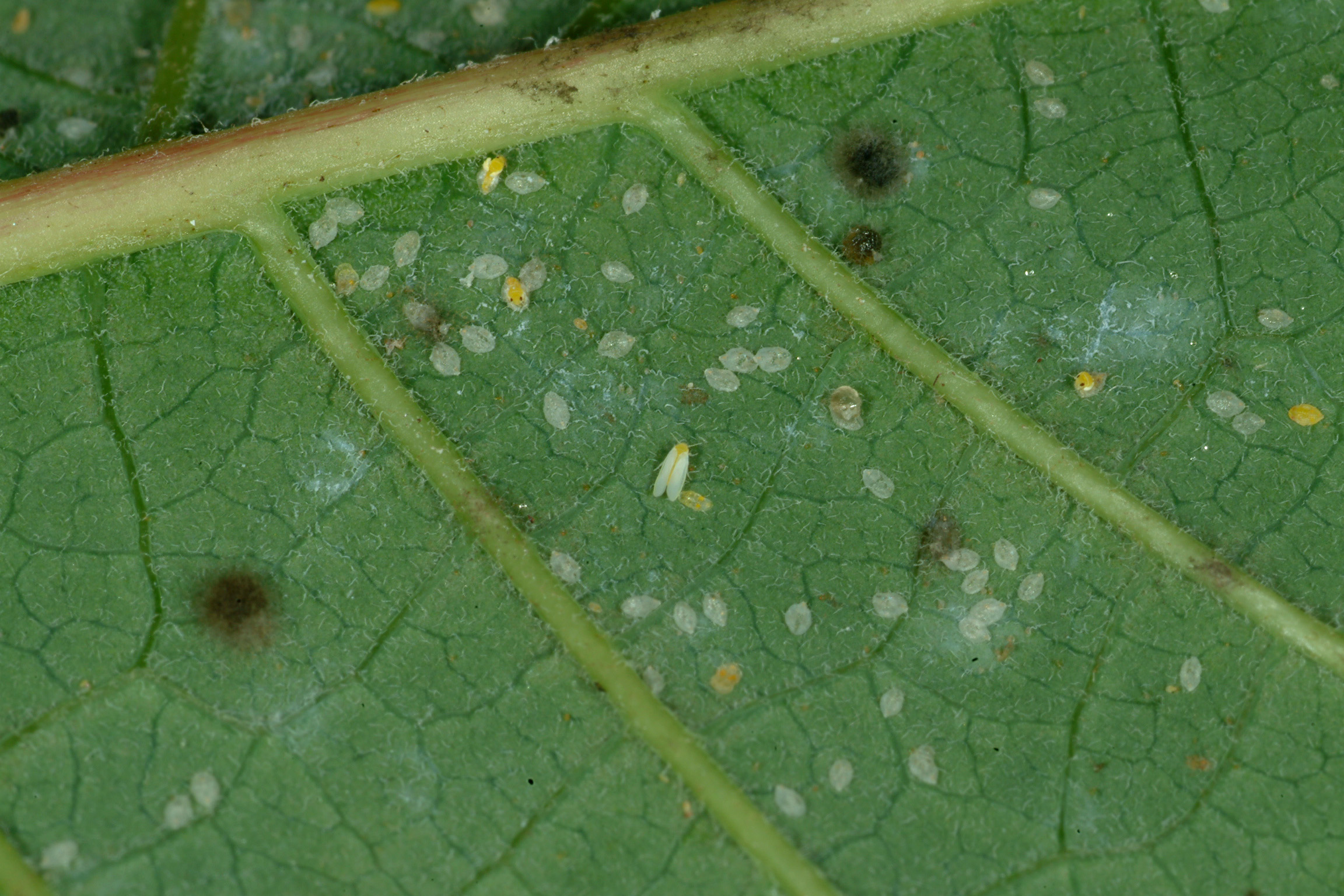Silverleaf Whitefly on Cucurbit Crops
Return to Insect Pests
Silverleaf whitefly (Bemisia tabaci) can sometimes be distinguished from the greenhouse whitefly by how it holds its wings. The silverleaf whitefly often holds its wings with a visible space between them, while the greenhouse whitefly usually holds its wings touching the abdomen or slightly overlapping it. The silverleaf whitefly gets its name because it injects a toxin into the plant that causes whitening of the undersurface of newly emerging leaves. Unfortunately, small numbers of silverleaf whitefly can cause silvering of small squash transplants. Damage may be more severe on younger plants than to plants closer to harvest. Once whiteflies stop feeding, the new foliage will emerge with normal color.

Silverleaf whitefly.
(Photo: Ric Bessin, University of Kentucky)
Silverleaf whitefly damage symptoms.
(Photo: Timothy Coolong, University of Kentucky)
Management:
- A number of predaceous insects feed on silverleaf whitefly and one commercial parasitoid wasp, Eretmocerus emericus, has been used successfully in greenhouses.
- Chemical control of whiteflies can be difficult, as the adults and immature stage occur on the underside of leaves, particularly older leaves, making spray coverage critical for good control.
